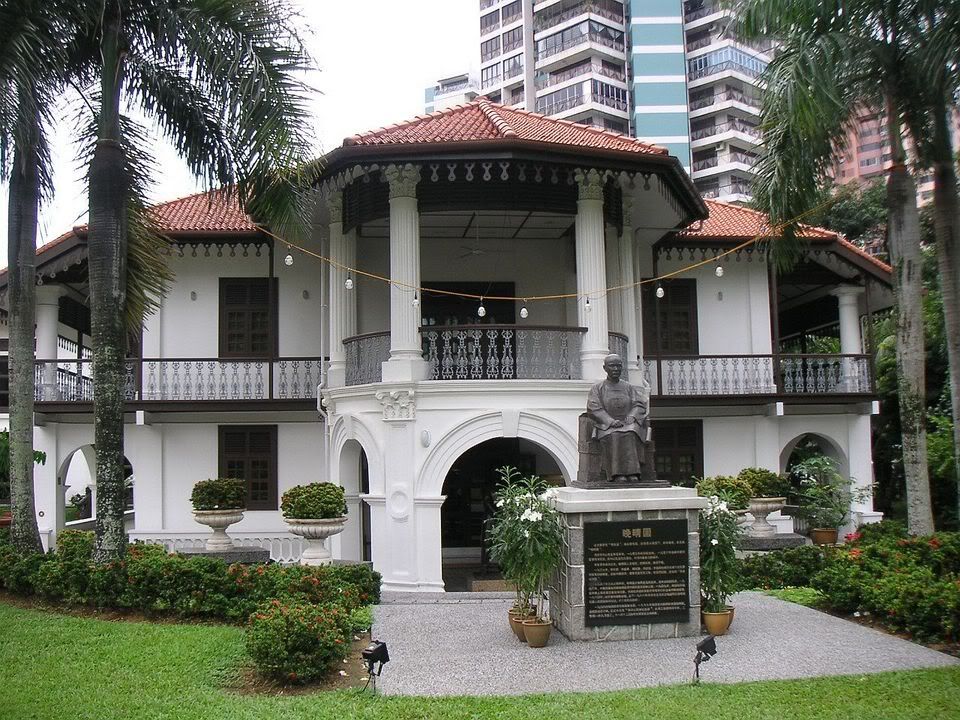Singapore's cityscape is ever changing. The pace of urban renewal is fast. Yet there are still some buildings that remain as memories of days gone by.
This is my thread on the bungalows, villas, mansions, houses and residences from the past. Included here are pictures, address, date of completion and any info I can find.
Update on list:
Sun Yat-Sen Villa, 12 Tai Gin Road
Unnamed mansion, St Patrick's Road
Unnamed villa, Joo Chiat Road, East Coast Road end
India House, 31 Grange Road
Flagstaff House, 64 Sime Road
Old Admiralty House, 345 Old Nelson Road
Chee Guan Chiang House, 25 Grange Road
Unnamed villa, 25 Grange Road
233 Pasir Panjang Road
10 Gilstead Road
Field House, 25 Gilstead Road
42 Gilstead Road
Command House, 17 Kheam Hock Road
Golden Bell, 10 Pender Road
2 Bedok Avenue
Karikal Mahal, 25 Still Road South
_____________________________________________________________
First, historically the most important and valuable house:
Sun Yat Sen Villa (1900s), 12 Tai Gin Road

Wan Qing Yuan was built in late 19th Century. The villa was bought by rubber magnate Teo Eng Hock for his mother, Mdm Tan Poh Neo. A fervent supporter of the Chinese revolutionary cause, Teo Eng Hock later offered the place to Dr Sun for his revolutionary activities in February 1906. After the success of the 1911 Revolution, Wan Qing Yuan was subsequently entrusted to the then Singapore Chinese Chamber of Commerce (now Singapore Chinese Chamber of Commerce & Industry, SCCCI).
In December 1964, the Singapore Chinese Chamber of Commerce revamped the villa to commemorate Dr Sun and his revolutionary movement. The project was completed in 1965 and the villa became Dr Sun Yat Sen Villa.
After Dr Sun Yat Sen Villa was gazetted a national monument in 1994 by the Preservation of Monuments Board, the SCCCI renamed the villa as Sun Yat Sen Nanyang Memorial Hall in 1996 to trace Dr Sun's revolutionary activities in the Southeast Asian region. A subsidiary company, Sun Yat Sen Nanyang Memorial Hall Co Ltd, was set up in 1997 to spearhead the restoration project.
A restoration team was formed under the initiative of Mr Kwek Leng Joo, President of SCCCI. Led by Mr Kwek personally and comprising five committees sharing the same vision, the team planned and implemented over four years to transform the villa into a memorial hall.
After four years of restoration works and funding amounting more than $8 million, the Memorial Hall was completed in October 2001. On 12 November 2001, it was officially opened by Senior Minister Lee Kuan Yew.
______________________________________________________________
1900 - 1906:
Built in 1900, this double-storey bungalow (formerly known as Bin Chan House) was initially built for the beloved mistress of wealthy businessman Boey Chuan Poh. Years later, rubber magnate Mr Teo Eng Hock acquired the residence for his aged mother, Mdm Tan Poh Neo. The villa was then given a new Chinese name, Wan Qing Yuan ( 晚晴园 ), to symbolise peace and happiness in his mother's twilight years. A fervent supporter of the Chinese revolutionary cause, Mr Teo Eng Hock later offered the place to Dr Sun Yat Sen for his revolutionary activities in February 1906.
1906 - 1911:
Dr Sun Yat Sen chose Singapore as the nerve centre of his revolutionary movement (Tong Meng Hui) in Southeast Asia, due to its excellent geographical location as a port of call and its considerable Chinese immigrant population. It was in this villa that Dr Sun led numerous red-blooded Chinese men in the planning of several uprisings against the Manchu (Qing) government. Shining examples include the Zhennanguan and Huanggang uprisings.
Dr Sun came to Singapore on eight separate occasions. His third and final visit to the villa was in 1910 before leaving for Penang with his family. In 1911, the Wuchang Uprising succeeded and he went on to be inaugurated the first Provisional President of the Republic of China.
As years passed by, gone were the days of glory. Teo Eng Hock lost much of his wealth after 1911 and the villa was subsequently sold to an Indian merchant as a private residence.
1937 - 1938:
In 1937, six former comrades of Dr Sun Yat Sen - Messrs Lee Kong Chian, Lee Chin Tian, Lee Choon Seng, Tan Ean Kiam, Chew Hean Swee and Yeo Kiat Tiow, jointly acquired the villa and offered the place to the Chinese Nanjing Republican Government in 1938. The villa was placed under the care of the Singapore Chinese Chamber of Commerce.
1942 - 1945:
During the Japanese Occupation, the villa was used as a Japanese Communication Centre and Kempeitai branch.
1964 - 1966:
In December 1964, the Chinese Chamber of Commerce decided to revamp the villa to commemorate Dr Sun and his revolutionary movement. The project was completed in 1965. That November 12, Dr Sun's 99th birthday was celebrated at the villa. In 1966, the Chinese Chamber of Commerce exhibited the remains of the civilians who perished during the Japanese Occupation at the villa. At this point, the villa had two exhibitions - Dr Sun's artefacts and pictures, and the remains of the victims of war.
1994 - 1997:
The villa was gazetted a national monument in 1994 by the Preservation of Monuments Board. It was renamed Sun Yat Sen Nanyang Memorial Hall in 1996 to trace Dr Sun's revolutionary activities in the Southeast Asian region, especially in Singapore and Malaya, before he successfully ended the reign of the Qing Dynasty in China. The memorial hall was closed to the public in 1997 for renovation and expansion.
2001:
The rejuvenated memorial hall opens its doors on 12 November 2001 to coincide with Dr Sun's 135th birthday.



















































